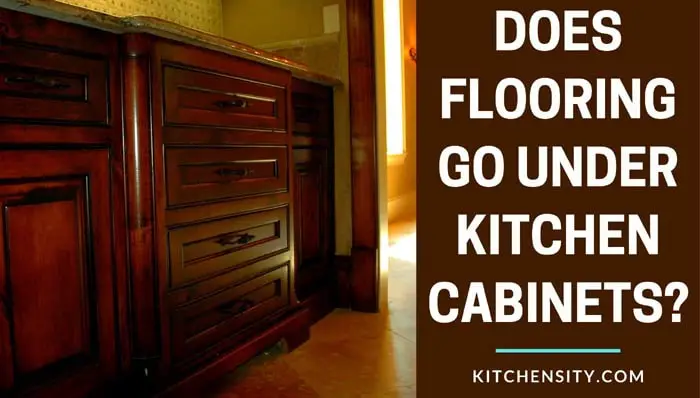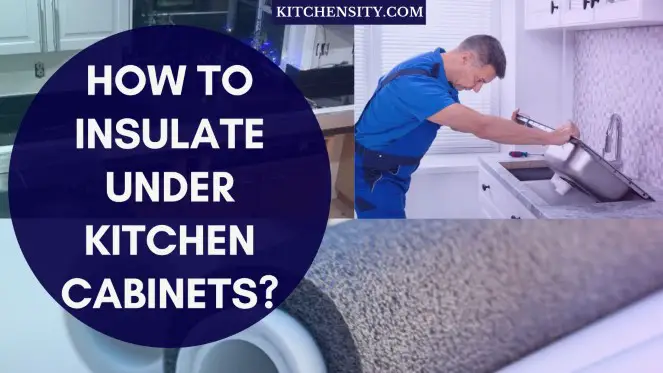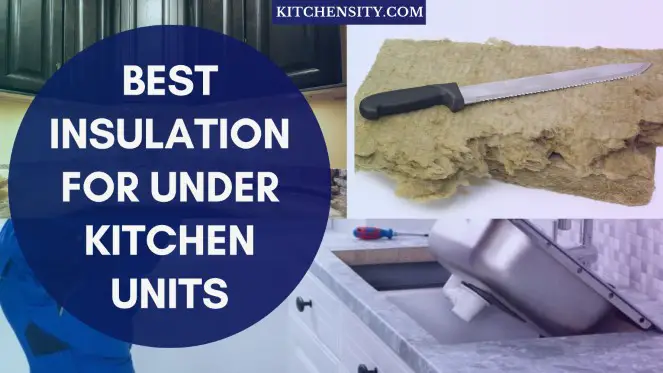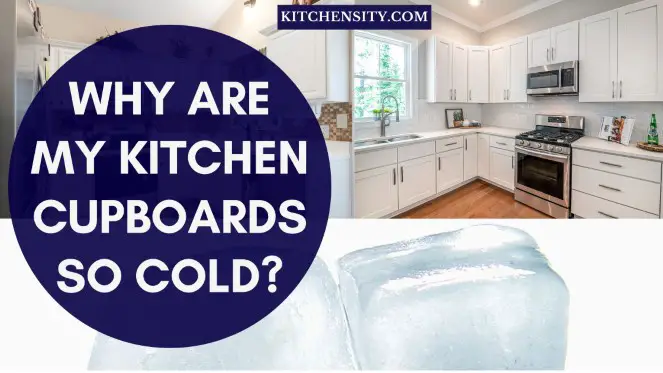Renovating kitchen cabinets is an excellent way to give your kitchen a fresh look without breaking the bank.
Chalk paint has gained immense popularity as a go-to option for refinishing cabinets and furniture.
In this article, we will explore the world of chalk paint and its durability when used on kitchen cabinets.
From the application process to maintenance and long-term performance, we’ll cover everything you need to know about chalk-painted kitchen cabinets.
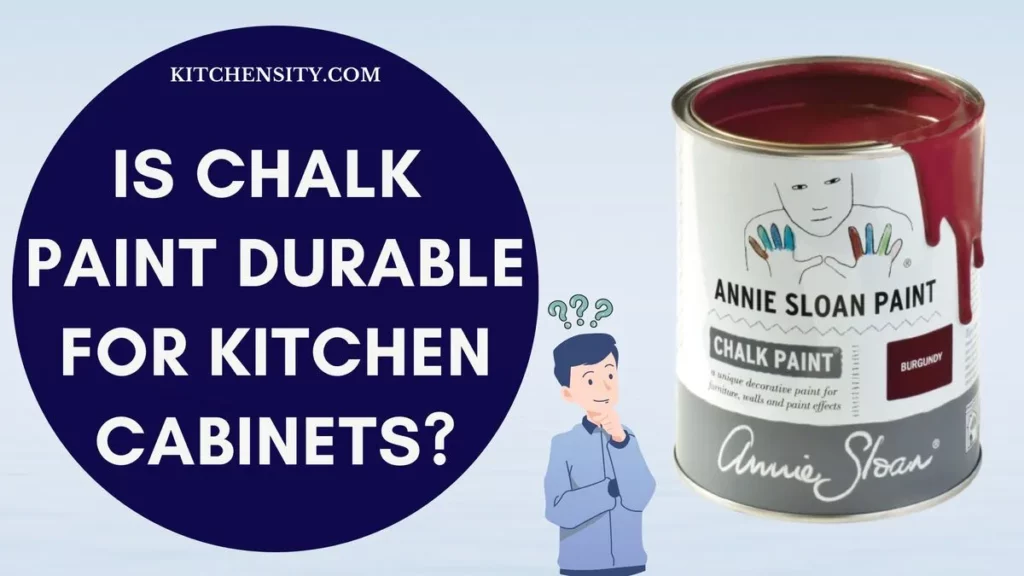
Table of Contents
- 1 Is Chalk Paint Durable For Kitchen Cabinets?
- 2 Understanding Chalk Paint
- 3 Durability Of Chalk Paint On Kitchen Cabinets
- 4 Maintaining Chalk Painted Kitchen Cabinets
- 5 How Durable Is Chalk Paint For Kitchen Cabinets?
- 6 Chalk Paint Vs Traditional Paint For Kitchen Cabinets
- 7 How To Seal Chalk Paint Kitchen Cabinets?
- 8 The Best Colors For Chalk Painted Kitchen Cabinets
- 9 Final Verdict
- 10 YOU MAY ALSO LIKE
- 11 Frequently Asked Questions (FAQs)
- 11.1 How Much Chalk Paint Do I Need For Kitchen Cabinets?
- 11.2 Can I Use Chalk Paint On Laminate Cabinets?
- 11.3 Can I Distress Chalk-Painted Kitchen Cabinets?
- 11.4 Is It Necessary To Sand Kitchen Cabinets Before Applying Chalk Paint?
- 11.5 Can I Use Regular Paint Over Chalk Paint?
- 11.6 How Long Should I Wait Before Applying A Second Coat Of Chalk Paint?
Is Chalk Paint Durable For Kitchen Cabinets?
Yes, chalk paint can be durable for kitchen cabinets when applied correctly and sealed with a protective topcoat. Its matte finish and versatility make it a popular choice, but proper surface preparation and maintenance are essential for maintaining its longevity.
Also Read – How To Fix Scratched Kitchen Cabinets?
Understanding Chalk Paint
Chalk paint is a unique type of paint known for its matte and velvety finish. It was originally developed by Annie Sloan in 1990 as a versatile, user-friendly, and eco-friendly paint option. Unlike traditional paints, chalk paint requires minimal surface preparation, making it ideal for various DIY projects.
Advantages Of Using Chalk Paint On Kitchen Cabinets
Kitchen cabinets play a significant role in defining the overall aesthetics and functionality of the heart of your home. When it comes to renovating and revamping these essential storage spaces, chalk paint stands out as an exceptional choice.
Let’s explore the numerous advantages of using chalk paint on kitchen cabinets:
- Aesthetics And Versatility:
- Chalk paint offers a unique and charming matte finish that adds a touch of elegance to your kitchen cabinets.
- With a vast array of colors available, you can easily find the perfect shade to match your kitchen’s style and decor.
- From modern and chic to rustic and traditional, chalk paint can effortlessly adapt to any design vision.
- Easy Application:
- Unlike traditional paints, chalk paint requires minimal preparation.
- It adheres well to various surfaces, including wood, laminate, metal, and more, reducing the need for extensive sanding or priming.
- This makes it an ideal choice for DIY enthusiasts looking to transform their kitchen cabinets without complicated procedures.
- Quick Drying Time:
- Chalk paint boasts a relatively quick drying time, allowing you to complete your kitchen cabinet project in a shorter timeframe.
- This is particularly advantageous for those looking to complete their kitchen renovation efficiently and without unnecessary delays.
- Eco-Friendly Option:
- If you prioritize environmental sustainability, chalk paint is a fantastic eco-friendly choice.
- Water-based and low in volatile organic compounds (VOCs), it has a minimal impact on indoor air quality and the environment.
- By opting for chalk paint, you can contribute to creating a healthier living space for your family and reduce your carbon footprint.
- Distressing For A Vintage Look:
- Chalk paint’s matte finish provides an excellent base for distressing techniques.
- If you desire a vintage or shabby-chic look for your kitchen cabinets, distressing with chalk paint can achieve that effortlessly.
- It adds character and a sense of history to your cabinets, making them a standout feature in your kitchen.
- Simple Maintenance:
- Maintaining chalk-painted kitchen cabinets is hassle-free.
- For routine cleaning, a soft cloth and mild soapy water are sufficient to keep them looking pristine.
- In case of stains or minor damages, touch-ups with chalk paint are easy and seamless.
- Cost-Effective Solution:
- Kitchen renovations can be costly, but chalk paint provides a budget-friendly alternative.
- By choosing chalk paint for your cabinets, you can achieve a high-end look without the need for expensive materials or professional painters.
- Customization And Creativity:
- Chalk paint allows for creative expression and customization.
- Whether you want to experiment with different colors, create intricate designs, or personalize your cabinets with stencils, chalk paint provides the perfect canvas for your artistic inclinations.
- Enhancing Cabinet Hardware:
- The matte finish of chalk paint complements a wide range of cabinet hardware.
- Upgrading your hardware with stylish knobs and handles can further enhance the overall appearance of your chalk-painted kitchen cabinets.
- Timeless Appeal:
- Chalk paint’s classic and timeless look ensures that your kitchen cabinets won’t go out of style.
- It withstands changing design trends, guaranteeing long-term satisfaction with your cabinet renovation.
So, using chalk paint on kitchen cabinets brings an array of advantages, from its beautiful matte finish and ease of application to its eco-friendly nature and budget-friendly benefits.
With the added potential for customization and the ability to achieve a vintage appearance, chalk-painted cabinets can elevate the aesthetics and functionality of your kitchen space, making it a top choice for homeowners seeking a stylish and durable cabinet solution.
Our Recommendation Of Chalk Paints And Brushes – Click Here
Durability Of Chalk Paint On Kitchen Cabinets
When it comes to renovating kitchen cabinets, durability is a key factor to consider. After all, kitchen cabinets are subjected to daily wear and tear, and you want a paint finish that can withstand the demands of a busy kitchen.
Let’s explore the factors that influence the durability of chalk paint on kitchen cabinets and how to ensure long-lasting results.
Also Read – Do Kitchen Cabinets Need Crown Molding?
- Properly Preparing The Cabinets:
- The first step to ensuring the durability of chalk paint on kitchen cabinets is proper preparation.
- Before applying the paint, it’s crucial to clean the cabinets thoroughly to remove any grease, grime, or residues.
- This ensures that the paint adheres well to the surface and minimizes the risk of peeling or chipping over time.
- Choosing Quality Chalk Paint:
- The quality of chalk paint can significantly impact its durability.
- Opt for reputable brands known for producing high-quality chalk paint.
- Quality paints tend to have better adhesion and coverage, providing a more durable finish that stands the test of time.
- Applying Thin And Even Coats:
- To achieve a durable finish, apply chalk paint in thin and even coats.
- Avoid applying thick layers, as they may not dry properly and can lead to cracking or peeling.
- Multiple thin coats allow for better adhesion and a smoother finish, enhancing the paint’s overall longevity.
- Sealing The Chalk Paint:
- While chalk paint offers a beautiful matte finish, it may not be as durable on its own as some other paint types.
- To enhance its longevity and protect it from scratches and stains, consider applying a topcoat or sealer.
- Popular sealant options include polyurethane or furniture wax.
- These protective layers act as a barrier, making the painted surface more resistant to everyday use.
- Avoiding Harsh Cleaners:
- To maintain the durability of chalk-painted kitchen cabinets, it’s essential to avoid using harsh chemical cleaners.
- These cleaners can break down the paint’s finish over time and lead to premature wear.
- Instead, opt for gentle, non-abrasive cleaning solutions and a soft cloth to clean the cabinets regularly.
- Touch-Ups And Maintenance:
- Even with proper preparation and sealing, it’s normal for kitchen cabinets to experience minor wear and tear over time.
- To keep your chalk-painted cabinets looking fresh and beautiful, perform occasional touch-ups.
- Keep a small amount of the original chalk paint handy for quick fixes.
- If you encounter deeper scratches or significant damage, consider applying a fresh coat of paint followed by resealing to restore the cabinet’s appearance.
- Consider Cabinet Usage:
- The durability of chalk paint can also depend on how you use your kitchen cabinets.
- Cabinets that experience heavy daily use, such as those in high-traffic kitchens, may require more maintenance and touch-ups over time.
- Being mindful of how you handle and care for your cabinets can contribute to their long-term durability.
- Climate And Environmental Factors:
- Environmental conditions, such as humidity and temperature fluctuations, can impact the durability of chalk paint.
- For instance, high humidity levels may prolong drying times, affecting the paint’s ability to cure properly.
- To minimize the impact of climate on the paint’s durability, ensure proper ventilation and consider using a dehumidifier if needed.
So, the durability of chalk paint on kitchen cabinets depends on various factors, including proper preparation, quality of paint, application technique, and maintenance.
By following best practices and taking the necessary precautions, you can enjoy beautiful and long-lasting results with chalk-painted kitchen cabinets.
The charming matte finish and versatility of chalk paint make it a popular choice for homeowners seeking both aesthetics and durability in their kitchen renovations.
Also Read – Is Murphy Oil Soap Good For Kitchen Cabinets?
Maintaining Chalk Painted Kitchen Cabinets
Congratulations on choosing chalk paint for your kitchen cabinets! Now that you have transformed your cabinets with a beautiful matte finish, it’s essential to know how to properly maintain them to ensure their longevity and keep them looking pristine.
Follow these simple maintenance tips to preserve the beauty of your chalk-painted kitchen cabinets:
1. Gentle Cleaning
- Regular cleaning is essential to prevent dirt and grime from accumulating on the painted surface.
- Use a soft, lint-free cloth dampened with mild soapy water to gently wipe down the cabinets.
- Avoid harsh or abrasive cleaners, as they can damage the chalk paint’s finish.
- Opt for non-abrasive cleaning solutions to protect the paint while keeping your cabinets clean and fresh.
2. Avoid Excessive Moisture
- While chalk paint is relatively durable, excessive moisture can still affect its longevity.
- Be cautious when placing hot or damp items directly on the cabinet surfaces.
- Use trivets or placemats to protect the paint from heat and moisture.
- Wipe up spills promptly to prevent any liquids from seeping into the paint and causing damage.
Also Read – How To Draft-Proof Your Under Kitchen Cabinets?
3. Mindful Handling
- Be gentle with your chalk-painted kitchen cabinets.
- Avoid slamming doors or drawers, as rough handling can lead to chipping or scratches.
- Soft-close hardware can help prevent accidental impacts and reduce wear on the paint over time.
4. Preventative Measures
- To further protect your chalk-painted cabinets, consider using adhesive felt pads on the inside of cabinet doors and drawers.
- These pads cushion the surfaces and prevent them from rubbing against each other, reducing the risk of paint wear.
5. Avoid Heavy Abrasion
- While chalk paint is generally durable, it may not hold up well to heavy abrasion.
- Avoid using abrasive sponges or scouring pads when cleaning, as they can scratch the paint’s surface.
- Stick to soft cloths and gentle cleaning methods to maintain the integrity of the paint.
6. Regular Inspections
- Perform regular inspections of your chalk-painted cabinets to spot any signs of wear or damage early on.
- Check for any chipping, scratches, or areas that may need touch-ups.
- Promptly addressing minor issues can prevent them from escalating and help your cabinets look fresh and new for longer.
Also Read – How To Stop A Draught From Behind Kitchen Cupboards?
7. Touch-Ups And Maintenance
- Over time, it’s normal for chalk-painted cabinets to experience some wear, especially in high-traffic areas.
- Keep a small amount of the original chalk paint on hand for touch-ups.
- Gently sand the affected area, apply a thin coat of chalk paint, and reseal if necessary.
- These touch-ups will help maintain a consistent and flawless appearance.
8. Avoiding Direct Sunlight
- Excessive exposure to direct sunlight can cause fading and discoloration of the chalk paint over time.
- If possible, consider using window treatments or positioning furniture to shield your cabinets from prolonged sunlight exposure.
By following these maintenance tips, you can ensure that your chalk-painted kitchen cabinets retain their beauty and durability for years to come.
With proper care and attention, your chalk-painted cabinets will continue to be a focal point of your kitchen and an enduring source of pride in your home.
Also Read – Why Are My Kitchen Cupboards So Cold?
How Durable Is Chalk Paint For Kitchen Cabinets?
The longevity of chalk paint on kitchen cabinets can vary depending on several factors, including the quality of the paint, the preparation and application process, the level of usage, and the maintenance routine.
When applied correctly and with proper care, chalk paint can provide a durable and attractive finish that lasts for several years.
Let’s explore the key factors that influence how long chalk paint lasts on kitchen cabinets:
- Quality Of Chalk Paint: Using high-quality chalk paint can significantly impact its durability. Reputable brands often offer paints with better adhesion and coverage, ensuring a longer-lasting finish.
- Surface Preparation: Properly preparing the kitchen cabinets before applying chalk paint is crucial. Thoroughly cleaning and lightly sanding the surfaces help the paint adhere better, contributing to its longevity.
- Application Technique: Applying chalk paint in thin, even coats allows for better adhesion and a smoother finish. Properly applied paint is less likely to chip or peel over time.
- Sealing The Chalk Paint: While chalk paint has a beautiful matte finish, it may not be as durable on its own as other paint types. Applying a topcoat or sealer, such as polyurethane or furniture wax, adds an extra layer of protection and increases the paint’s longevity.
- Level Of Usage: The durability of chalk-painted kitchen cabinets can be influenced by how frequently the cabinets are used. Cabinets in high-traffic kitchens may experience more wear and tear, necessitating more frequent maintenance.
- Maintenance Routine: Regular maintenance, such as gentle cleaning and occasional touch-ups, is essential to keep chalk-painted cabinets looking fresh. Proper care helps prevent the paint from wearing down prematurely.
- Environmental Factors: Environmental conditions, such as humidity and temperature fluctuations, can impact the durability of chalk paint. Maintaining a stable indoor environment can help preserve the paint’s integrity.
- Cabinet Material: The type of material used for the kitchen cabinets can also affect how long chalk paint lasts. Cabinets made of wood or other porous materials may require more maintenance compared to surfaces like metal or laminate.
While it’s challenging to provide an exact timeline for how long chalk paint will last on kitchen cabinets, with proper preparation, application, and maintenance, it is possible to enjoy a durable and beautiful finish for many years.
Regularly inspecting the cabinets for any signs of wear and promptly addressing any minor issues with touch-ups can help prolong the life of the chalk paint and maintain the overall aesthetics of your kitchen.
Ultimately, chalk-painted kitchen cabinets offer an appealing and versatile option for homeowners seeking a budget-friendly and stylish way to update their kitchen space, and with proper care, they can continue to add charm and elegance to your home for an extended period.
Also Read – Best Insulation for Under Kitchen Units
Chalk Paint Vs Traditional Paint For Kitchen Cabinets
When it comes to refinishing kitchen cabinets, choosing the right type of paint is essential to achieve the desired look and long-term durability. Chalk paint and traditional paint are two popular options, each with its own set of advantages and characteristics.
Let’s compare chalk paint and traditional paint for kitchen cabinets to help you make an informed decision:
Chalk Paint For Kitchen Cabinets
Advantages
- Ease Of Application: Chalk Paint is known for its user-friendly application process. It requires minimal surface preparation, such as sanding and priming, making it ideal for DIY projects.
- Matte Finish: Chalk paint offers a beautiful matte finish, which adds a touch of elegance and charm to kitchen cabinets. This finish is particularly appealing to those seeking a rustic or vintage look.
- Wide Range Of Colors: Chalk paint comes in an extensive array of colors, allowing you to easily find the perfect shade to match your kitchen decor and personal style.
- Distressing Options: Chalk paint is excellent for distressing techniques, allowing you to create a weathered or aged appearance for a shabby-chic or farmhouse-style kitchen.
- Eco-Friendly: Most chalk paints are water-based and low in volatile organic compounds (VOCs), making them a more environmentally friendly choice compared to some traditional paints.
Considerations
- Durability: While chalk paint can be sealed for added protection, it may not be as durable on its own as some traditional paint options. Sealing with a topcoat or wax is essential to enhance its resistance to daily wear and tear.
- Limited Finish Choices: Chalk paint’s matte finish may not be suitable for those seeking a glossy or satin appearance on their kitchen cabinets.
Also Read – How to Insulate Under Kitchen Cabinets?
Traditional Paint For Kitchen Cabinets
Advantages
- Durability: Traditional paint, especially high-quality enamel or acrylic paints, can provide a more durable and long-lasting finish on kitchen cabinets.
- Variety Of Finishes: Traditional paint offers a wide range of finishes, including glossy, satin, and semi-gloss, allowing you to choose the level of sheen that best suits your kitchen’s aesthetics.
- Strong Adhesion: When properly applied, traditional paint adheres well to surfaces, creating a strong bond that can withstand daily use and cleaning.
- Scratch And Stain Resistance: Some types of traditional paint offer better resistance to scratches and stains, making them suitable for high-traffic kitchens.
Considerations
- Surface Preparation: Traditional paint often requires more extensive surface preparation, such as sanding and priming, to achieve the best results.
- Drying Time: Traditional paint may have longer drying times compared to chalk paint, which can impact the overall project timeline.
- VOC Content: Depending on the type of traditional paint used, there may be higher VOC content, which can have an environmental impact and require adequate ventilation during application.
Also Read – What Can I Put Under My Kitchen Sink to Protect My Cabinets?
So, both chalk paint and traditional paint have their strengths and weaknesses when it comes to refinishing kitchen cabinets. Chalk paint is an excellent option for its ease of use, matte finish, and distressed look possibilities.
It works well for those seeking a DIY-friendly and eco-friendly solution. On the other hand, traditional paint, particularly high-quality enamel or acrylic paints, provides durability, a variety of finish options, and strong resistance to scratches and stains.
The choice between chalk paint and traditional paint depends on your preferences, the level of durability required, and the desired aesthetics for your kitchen cabinets.
Whether you opt for the rustic charm of chalk paint or the durability of traditional paint, proper surface preparation and maintenance are key to achieving beautiful and long-lasting results.
Also Read – Effective Ways To Update Old Kitchen Cabinets [Under $100]
How To Seal Chalk Paint Kitchen Cabinets?
Sealing chalk-painted kitchen cabinets is a crucial step to protect the paint and enhance its durability. The right sealing method can also add a subtle sheen to the matte finish, giving your cabinets a polished and long-lasting appearance.
Here’s a step-by-step guide on how to seal chalk paint on kitchen cabinets:
Materials Needed
- Clear furniture wax or water-based polyurethane (matte or satin finish)
- Wax brush or a clean, lint-free cloth
- Sandpaper (optional)
Also Read – Can You Use Loft Insulation Under Kitchen Cabinets?
Step-by-Step Process
- Prepare The Surface:
- Ensure that the chalk paint on your kitchen cabinets is fully dry before starting the sealing process.
- If necessary, lightly sand the painted surface with fine-grit sandpaper to smooth out any imperfections or brush strokes.
- Wipe away any dust with a clean, damp cloth and let the cabinets dry completely.
- Choose Your Sealer:
- There are two common types of sealers for chalk paint: clear furniture wax and water-based polyurethane.
- Furniture wax gives a soft, natural finish, while polyurethane offers more protection and durability.
- Decide which option suits your preferences and cabinet usage best.
- Applying Furniture Wax:
- If using furniture wax, dip a wax brush into the wax container and apply a thin, even coat to the painted surface.
- Work in small sections, applying the wax in the direction of the wood grain or the brush strokes.
- Allow the wax to sit for a few minutes (check the product instructions for specific wait times).
- Buff the wax gently with a clean, lint-free cloth to achieve a smooth and even finish.
- Applying Water-Based Polyurethane:
- If using water-based polyurethane, stir the product thoroughly to ensure an even application.
- Use a clean paintbrush or foam brush to apply a thin coat of polyurethane to the cabinets, again working in the direction of the wood grain or brush strokes.
- Allow the first coat to dry completely, following the recommended drying time on the product label.
- Apply additional coats as needed, lightly sanding between coats for a smoother finish if desired.
- Additional Coats (Optional):
- For added protection, you can apply a second coat of wax or polyurethane.
- Follow the same process as before, ensuring each coat is dry before applying the next.
- Curing Time:
- After sealing the chalk paint, it’s essential to allow the cabinets to cure fully. Curing time can vary depending on the product used, so refer to the manufacturer’s instructions for guidance.
- Avoid placing heavy objects or cleaning the cabinets excessively during the curing period to allow the sealer to set properly.
Properly sealed chalk-painted kitchen cabinets will be more resistant to scratches, stains, and moisture, ensuring a beautiful and long-lasting finish.
Regularly clean the cabinets with a gentle, non-abrasive cleaner and avoid using harsh chemicals to maintain the integrity of the sealed surface.
With proper sealing and maintenance, your chalk-painted kitchen cabinets will continue to add charm and style to your kitchen for years to come.
Also Read – Can You Put Kitchen Cabinets On Top Of Vinyl Plank Flooring?
The Best Colors For Chalk Painted Kitchen Cabinets
When it comes to choosing the best colors for chalk-painted kitchen cabinets, the options are nearly endless. The beauty of chalk paint lies in its versatility and ability to complement various kitchen styles.
Here are some popular and timeless color choices that work exceptionally well for chalk-painted kitchen cabinets:
- Classic White: White chalk-painted cabinets create a clean, bright, and timeless look. They can make a small kitchen feel more spacious and airy, while also serving as a canvas for various design elements.
- Neutral Gray: Gray is a versatile and sophisticated color that pairs well with a wide range of kitchen styles. Lighter shades of gray can create a soft and calming atmosphere, while darker shades add depth and elegance.
- Soft Pastels: Soft pastel colors, such as pale blue, mint green, or blush pink, add a subtle and charming touch to kitchen cabinets. They work well in vintage-inspired or cottage-style kitchens.
- Navy Blue: Navy blue chalk-painted cabinets add a sense of richness and depth to the kitchen. This color works beautifully in both traditional and modern kitchen designs.
- Sage Green: Sage green is a popular color choice for kitchen cabinets, offering a natural and earthy vibe. It pairs well with various countertop materials, from marble to wood.
- Creamy Beige: Creamy beige or off-white shades provide a warm and inviting feel to the kitchen. They can complement both traditional and contemporary kitchen designs.
- Charcoal Black: Black chalk-painted cabinets create a bold and sophisticated look. They add a touch of drama to the kitchen and work well with contrasting hardware and accessories.
- Warm Taupe: Taupe is a versatile and neutral color that blends well with different kitchen styles. It brings a sense of warmth and coziness to the space.
- Antique White: Antique white has a slightly aged and weathered appearance, making it perfect for achieving a vintage or shabby-chic look in the kitchen.
- Olive Green: For a unique and earthy vibe, olive green chalk-painted cabinets can be an excellent choice. They add a touch of nature and warmth to the kitchen.
When selecting a color for chalk-painted kitchen cabinets, consider the overall design and style of your kitchen, as well as your personal preferences.
Keep in mind that chalk paint’s matte finish can slightly alter the color appearance compared to traditional paints, so it’s a good idea to test the color on a small area before committing to painting the entire cabinet.
Ultimately, the best color for chalk-painted kitchen cabinets is one that reflects your personality, enhances the overall aesthetics of your kitchen, and brings joy and comfort to the heart of your home.
Also Read – How To Cut Down Kitchen Cabinets?
Final Verdict
Chalk paint can be durable for kitchen cabinets when applied correctly and sealed with a protective topcoat. Its matte finish and wide color selection make it a popular choice.
Proper surface preparation, high-quality paint, and sealing are key to enhancing its longevity. While not as naturally robust as traditional paint, chalk-painted cabinets can last with regular maintenance and care.
Ultimately, it offers an attractive and DIY-friendly option for those seeking a charming and unique kitchen cabinet makeover.
YOU MAY ALSO LIKE
- How To Repair Chipped Paint On Kitchen Cabinets?
- What Can I Put Under My Kitchen Sink to Protect My Cabinets?
- Refacing Kitchen Cabinets: An Ultimate DIY Guide
- Replace Kitchen Cabinets Without Replacing Countertop
- Chalk Paint Vs Latex Vs Regular Paint For Kitchen Cabinets
- How To Update Old Kitchen Cabinets?
- How To Repair Chipped Paint On Kitchen Cabinets?
- 3 Effective Ways To Update Old Kitchen Cabinets
- Why Are Kitchen Cabinets So Expensive?
Frequently Asked Questions (FAQs)
-
How Much Chalk Paint Do I Need For Kitchen Cabinets?
The amount of chalk paint needed for kitchen cabinets depends on the size and number of cabinets, but generally, a quart of chalk paint can cover approximately 150 square feet, so calculate accordingly.
-
Can I Use Chalk Paint On Laminate Cabinets?
Yes, chalk paint can be used on laminate cabinets. Ensure proper cleaning and light sanding of the surface for better adhesion.
-
Can I Distress Chalk-Painted Kitchen Cabinets?
Absolutely! Distressing chalk-painted cabinets can add a charming vintage touch to your kitchen.
-
Is It Necessary To Sand Kitchen Cabinets Before Applying Chalk Paint?
While chalk paint requires less surface preparation, light sanding can improve the paint’s adhesion and longevity.
-
Can I Use Regular Paint Over Chalk Paint?
In most cases, it is not recommended to apply regular paint over chalk paint, as it may not adhere properly.
-
How Long Should I Wait Before Applying A Second Coat Of Chalk Paint?
Allow the first coat of chalk paint to dry completely before applying a second coat. The drying time may vary depending on humidity levels and room temperature.
Katrina Smith is a seasoned expert with over 25 years of experience in all things related to cooking and the kitchen. As an avid cook and kitchen enthusiast, she is passionate about sharing her knowledge and expertise on cookware, kitchen appliances, kitchen tips, and kitchen staples.
Through her articles and reviews, Katrina aims to inspire and help others improve their cooking skills, experiment with different ingredients, and invest in quality cookware and appliances.

![3 Effective Ways To Update Old Kitchen Cabinets [Under $100] 3 How To Update Old Kitche Cabinets](https://www.kitchensity.com/wp-content/uploads/2021/05/How-To-Update-Old-Kitche-Cabinets.jpg)
![Refacing Kitchen Cabinets: An Ultimate DIY Guide [2023] 4 Refacing Kitchen Cabinets](https://www.kitchensity.com/wp-content/uploads/2021/05/Refacing-Kitchen-Cabinets.jpg)
